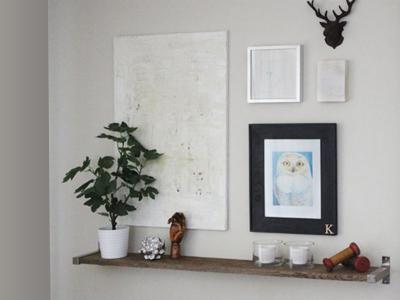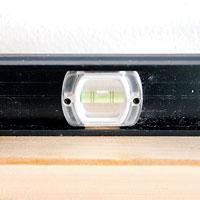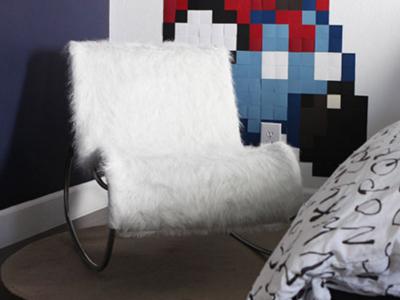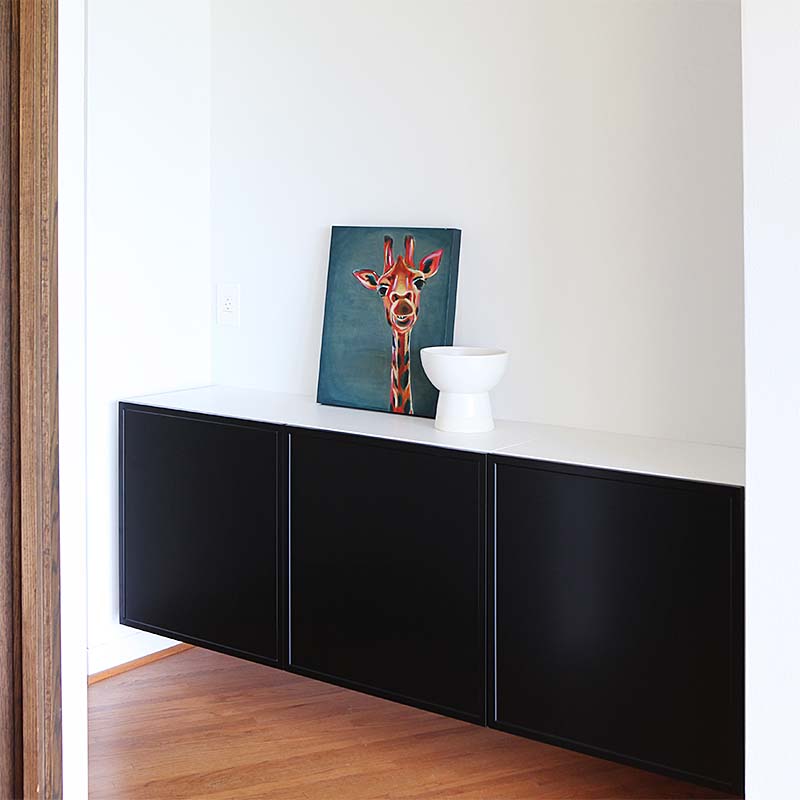Kreg Jig: At your split's end? trouble shooting ideas to avoid wood splitting
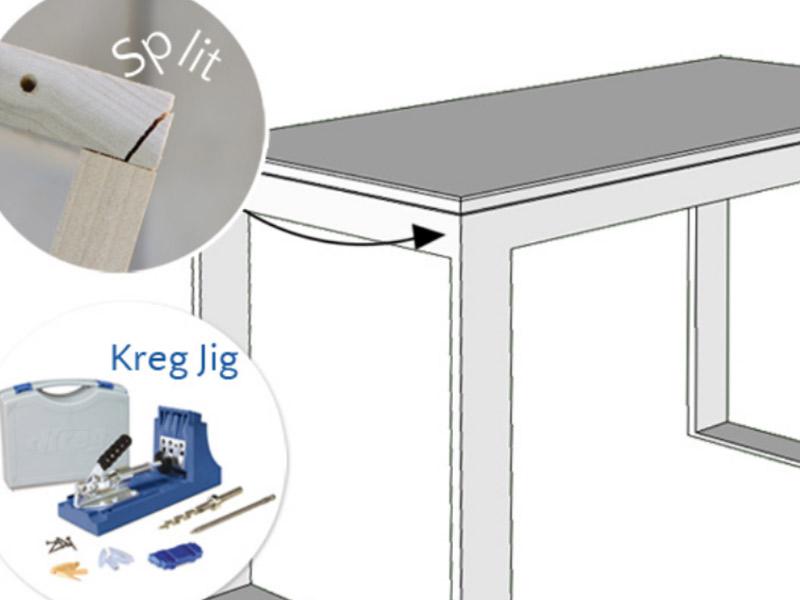
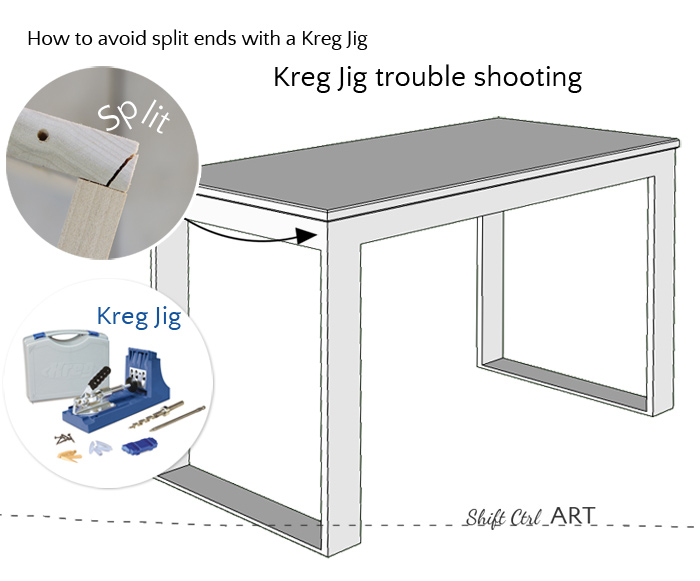
I love our new Kreg Jig. It's so easy to use and it gives you great professional results.
When I say easy to use, I mean easy to use after you have figured out a few things. As I mentioned in my tutorial on how to build our white desk ...

More desk and room pictures here.
... I did run into a few issues when I made my first Kreg Jig pockets. Of course on our first try with scrap wood there were no problems whatsoever, so you may not have experienced any problems, but when I went to put pocket holes into all the nice, newly sawed-to-size wood, and then screwed together the first three pieces of the frames and legs, and I split the ends of all three of them.
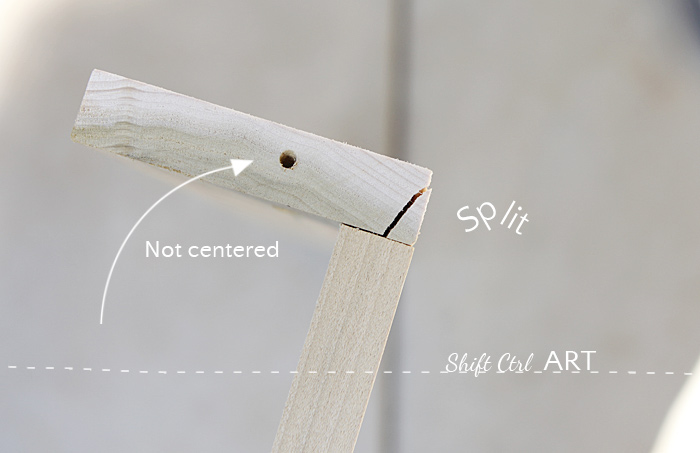
When the first one split, I thought: "That must be a mistake... let me try another". On the next one I thought: "That just can't be right" ... On the third one: "Ok, I need to Google this.. What is going on...?"
I googled it and wouldn't you know it... I am not the only one who has had that problem.
The most commonly suggested solutions are:
1. Try a fine threaded screw instead of a coarse threaded screw. If you read the manual it suggest coarsely threaded screws for soft wood like the pine we were using and finely threaded screws for more dense hardwoods like mahogany.
2. Drill the screw half in, then out. Remove the wood dust, then screw back in.
This is where it is extremely handy to be married to an Engineer. Frank took one look at my boards (above photo) and said: "But the hole isn't centered!"

The screw should have come out where I put the white dot.
So we would like to add a third option to that list of things you can do when trouble shooting why you are getting split ends.
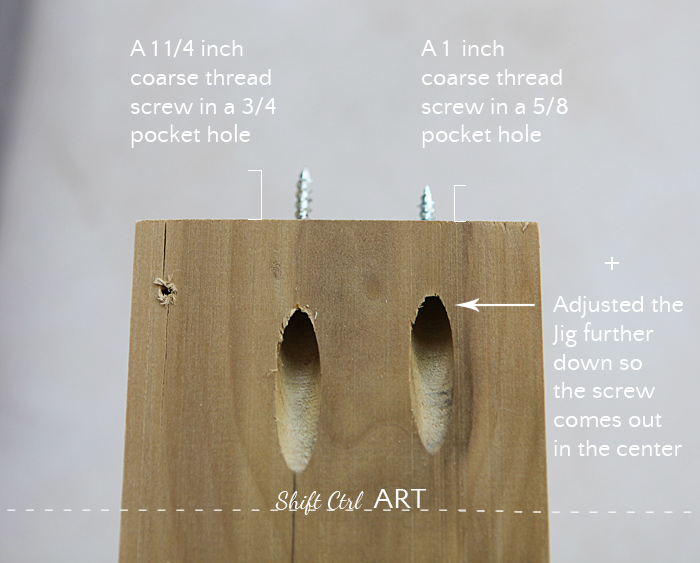
This is where we went against all advice in the manual and set the Kreg Jig to 5/8s wood thickness and used 1 inch (still coarse) screws even though the manual suggests setting it at 3/4 for 3/4 wood (!) and 1 1/4 inch screws.
In the above picture you can see our new hole on the right, side by side with the old hole on the left. The new hole is closer to the edge, but you can see the 1 inch screw does not stick out as far.
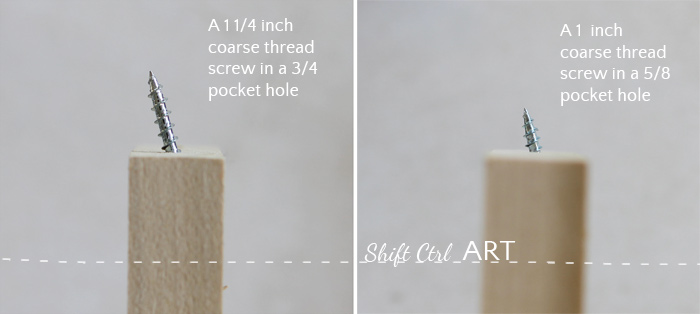
This is a side view of the same thing. On the left side you can see that the screw was way too long and goes too much to the left. On the right hand side it looks more right.
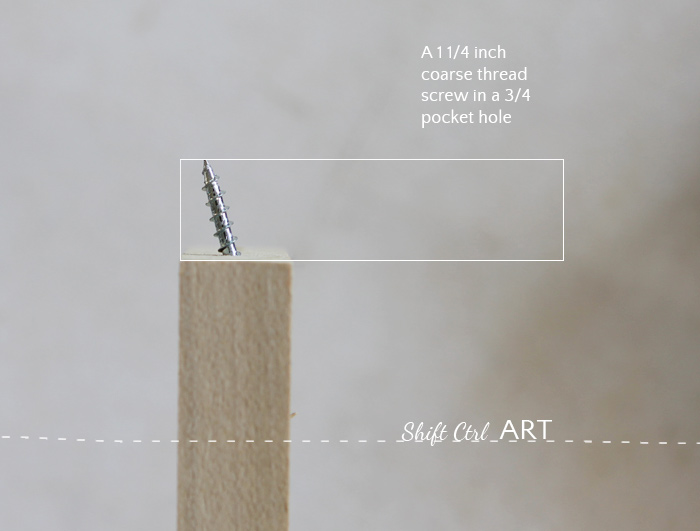
No wonder my wood was splitting with the 3/4 setting and the 1 1/4 screw length. The white box is an outline of the other board I was screwing this piece into.
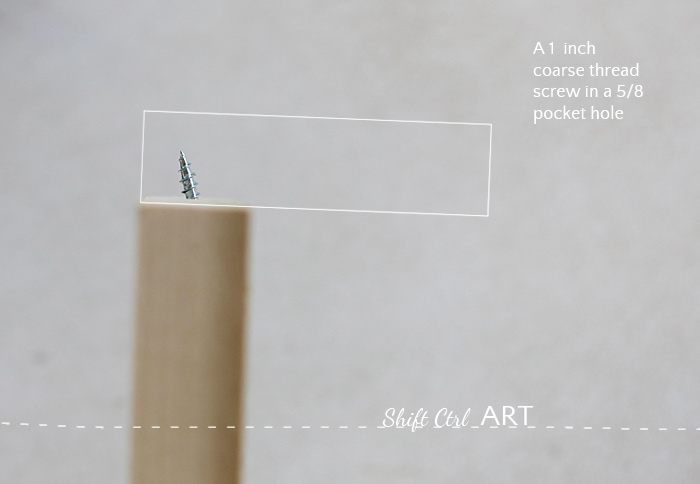
And here it looks so much better. And even better news: It works!! Wooohooo!

Side by side. Here you can see that the new shorter screw sits right in the middle, whereas the previously used, longer screw sits too far in front, further risking a wood split. Looking at these pictures it's a no-brainer why the wood split in the first place.
By the way: we stuck with the coarse thread and we did not use the tip of screwing half in, half out ![]()

We did do this other thing too: We put the pocket holes a bit closer to the center of the boards as outlined in the above image. Again this put the screw further away from the edge which really worked well for our table design.
If you use a more " back set" design instead of a "flush" design like we did, chances are you will not run into any of these sort of problems. It's when the screw is screwed in very close to an edge and going with the wood grain that you have this sort of problem.
Well not anymore...
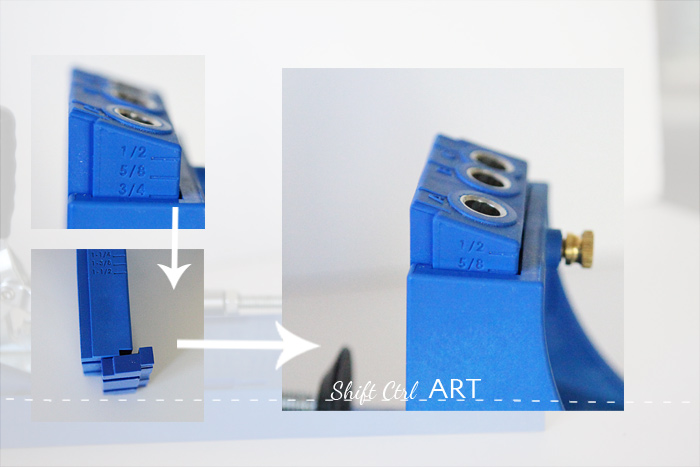
When we adjusted the Kreg Jig down to 5/8s (and removed the little slider thingy at the bottom to do that), ...
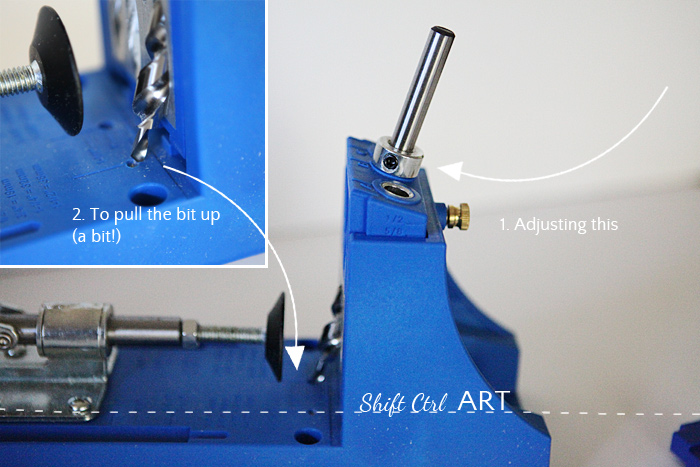
... Frank also adjusted the length of the drill. We adjusted it so that it would not even touch the blue bottom plate anymore, but just leave a slight pin hole, just "through" enough that the screw would fit through. This was to create the maximum amount of wood hold-back inside the pocket hole - again ensuring that the screw would not come out too far of the wood.
You have just read the post I was hoping to find when I was tearing out my hair and googeling: "Why does the wood split when I use my Kreg Jig" and found nothing like it ![]()
I hope it will help someone else...
Edited: Oh it did... look at all those fabulous comments. Thanks for leaving them!

You can see the finished table here.
And you can find the complete tutorial for building your own table like this here.
And here is the complete Tween room make-over reveal with all of our 12+ DIYs
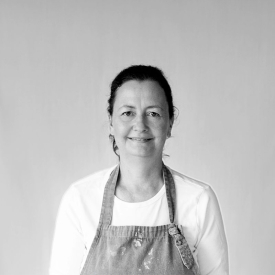
I am a Danish American decorating life in Seattle. I love all things design and DIY.
I can’t think of anything more fun than coming up with project, making it, photographing it and sharing it with you on my websites.
Since 2018 I have been making Ceramics, nearly full time.
AHomeForCeramics.com AHomeForDesign.com AHomeForCrafts.com AHomeForFood.com My Portfolio

